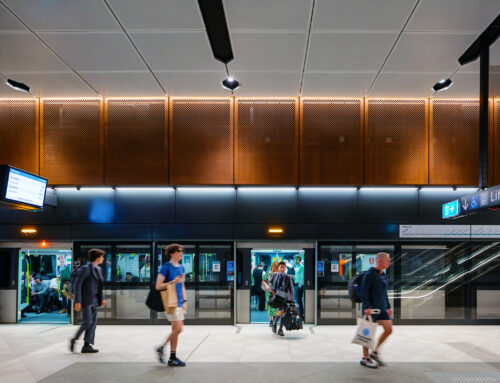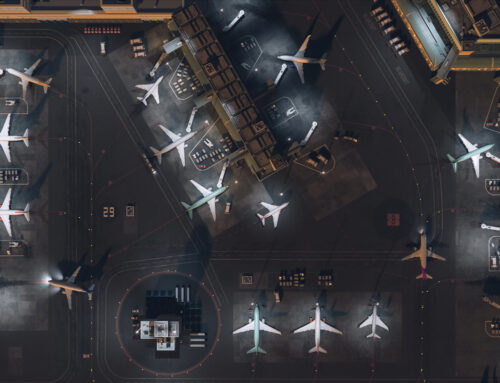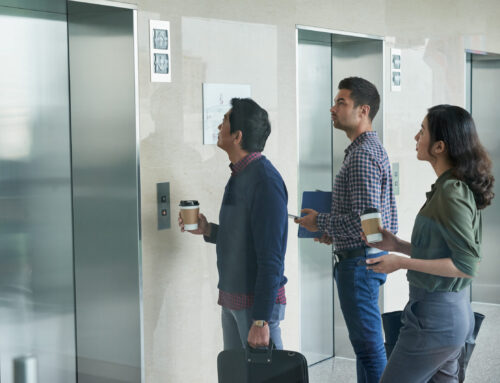Their movement will rely on robust and efficient vertical and horizontal transportation, from conventional lifts to escalators, moving walkways to horizontal and vertical mass transit systems.
Whatever the solutions, there will inevitably be hundreds of cabins or lifts, with escalators and moving walkways linking communal areas. They’ll need to be closely monitored to maintain the high service levels and prime condition which keep passengers, building owners and facilities managers happy.
The scale and expectations of these transport systems will need to lean heavily on cloud-based monitoring systems, such as the Internet of Things (IoT) systems offered in the vertical transportation (VT) marketplace.
However, the IoT solutions currently available will need to be developed to include expansive mechanical, electrical and electronic monitoring of devices with open sharing of data to fully leverage the benefits of monitoring and predictive maintenance. This needs to go hand-in-hand with effective inspection and adjustment regimes to keep things moving in our evolving urban habitat.
The bigger the building, the more people to please
As buildings become bigger, the reliance on efficient VT systems greatly increases and tenant premiums and expectations rise. The buildings within these vertical cities won’t operate properly without transport systems and, consequently, users will demand reliable and readily available transport 24/7.
Building owners will need more powerful and effective systems to ensure strong and lasting tenant relationships and provide consistent performance and service levels from VT devices for all building users.
Building owners will also have high expectations and their facilities managers will have a demanding business services workload to manage, of which the VT systems will be only one part. Unplanned maintenance will need to be minimised, and avoided, where possible. The knock-on effect of unplanned maintenance in a super high-rise, multi-use building is inevitably greater than in a smaller building that has a single purpose, like a workplace or shopping centre.
Expansive monitoring
The electro-mechanical componentry of a lift or escalator will need to be fully monitored.
In our experience, current IoT monitoring focuses primarily on electronic monitoring of motors and controller functions with minimal attention paid to the mechanical components that actually cause the majority of lift breakdowns.
Currently, sensors only appear to record electrical and controller data which can provide useful information to the lift contractor but offers little value to the building owner or facilities manager.
Very few, if any, of the proprietary IoT solutions in the current market offer monitoring of mechanical elements, outside of issues that can be identified from, say, varying motor current readings. And, yet, strategically placed sensors could provide constant monitoring and detection of changes in lift car ride, door operation, suspension media condition, lubrication systems, lift shaft structure and many other areas that would be indicative of wear, damage or misalignment of a component.
Research has verified high success rates in analysing accelerometer data to identify, for example, faults on landing door rollers. Sensors could also be used to monitor suspension media tension and condition, rope stretch and guide rollers, among many other things.
Effective monitoring and predictive analysis of these mechanical components would be able to effectively eliminate faults caused by wear and tear and provide true preventative maintenance. This would eliminate parts breaking down and greatly reduce the need for unplanned maintenance.
Without expansive monitoring of the full electro-mechanical componentry of a VT system, routine inspection remains an absolute necessity to check the condition, adjustment and lubrication levels of any components that aren’t monitored.
Data sharing
While original equipment manufacturers (OEM) are currently recording data through IoT, we’re unaware of any that provide access to this data for the equipment owners and operators.
Much of the data might be in a format that would provide no obvious benefit to the owner or operator, however, without the data, owners and facility managers rely wholly on a contractor to use their data in their best interests.
If they were to have access to this data, along with an understanding of what it means at a component level, owners and facilities managers could work with the contractor to understand what’s happening day-to-day across the building or site and maintain healthy VT equipment.
A second area where we see potential for change relates to data ownership. What happens to the data when a lift maintenance contract is terminated and that installation is connected to an IoT monitoring system?
Our understanding is that, currently, the data link is cut and the data stays in the original manufacturer’s data pool with the doors firmly closed to the lift owner. So, the lift owner loses the historical data their equipment has generated. Additionally, the proprietorial nature of the current electronic monitoring either prevents or restricts this same data being retrieved by other maintenance providers.
Ownership of the data from a legal perspective will be determined by the contractual arrangements. However, it seems logical that the owner of a lift should have a right to access and use the data generated by their vertical transportation equipment and the OEM should have an obligation to use this data to improve their service levels to the owners, operators and users of the equipment.
Open protocol collaboration
If every manufacturer of equipment offered expansive monitoring with access to data for the owner and operator, then development of systems by third party contractors wouldn’t be necessary. However, the industry is still evolving.
Third party contractors, researchers and academics around the world are developing their own monitoring systems that go beyond the current capabilities of the IoT systems developed by proprietary equipment manufacturers.
Given the proprietary nature of data within the vertical transportation industry, third party equipment may not be openly welcomed or allowed to be connected to an existing data pool for integrated monitoring. However, the development of new systems is a positive step forward in developing new solutions and challenging the status quo.
How might this look for a building owner and facilities manager?
If the VT industry was to take full advantage of modern monitoring technology and integrate it into their current IoT systems, we believe the real benefits to building owners, facilities managers and users will be huge and include:
- ownership and control over the data being recorded in their lift systems
- the opportunity to maximise its potential by cross pollinating with other data and systems to complement smart building outcomes, both during their relationship with the original equipment manufacturer and in subsequent contractor relationships
- a comprehensive dashboard showing in real time what’s happening in their VT systems with access to detailed records that can be extracted and shared with others through the cloud
- sensors on VT devices and structures to record the condition and performance of individual components and systems, identifying changes in ride quality and general condition
- the effective implementation of predictive maintenance providing attention to components with detected wear and tear or misalignment before it fails
- a paradigm shift away from fixed maintenance schedules towards a more proactive monitor-led maintenance regime
- less unplanned downtime as faults are identified early and lifts are fixed before they break down
- improved remote diagnosis of mechanical faults with the ability to carry out repairs with just one visit, taking the right parts and tools first time
- improved understanding of equipment condition and the ability to plan capital expenditure for planned upgrades and modernisation without the need to relinquish control and decision-making to a lift contractor
- continual improvements to remote diagnosis and solving of electronic and software problems through increased data analysis
- continual improvements in VT systems as lift contractors analyse the data pool to inform and improve product development
- the ability to optimise energy efficiency through well-adjusted equipment
- increased lifetime of a lift system with better performance from properly maintained and well-adjusted equipment.
The benefits for a building user include:
- improved passenger experience from well-adjusted equipment, for example better ride quality, smooth door operation, no knocks and bangs during their journey
- improved safety with the ability to improve passenger detection and understanding of passenger behaviour through AI and machine-learning algorithms.
Tall buildings don’t stand still
Buildings need to evolve as people’s needs change and systems need to adapt and grow with the occupants. The integration of effective IoT monitoring and management for vertical transportation is essential to successful adaptation.
At the heart of this technology is expansive monitoring that can provide effective predictive maintenance and true collaboration between building owners and VT service providers. This is what will keep people and goods moving in the vertical cities of the not-too-distant future.










